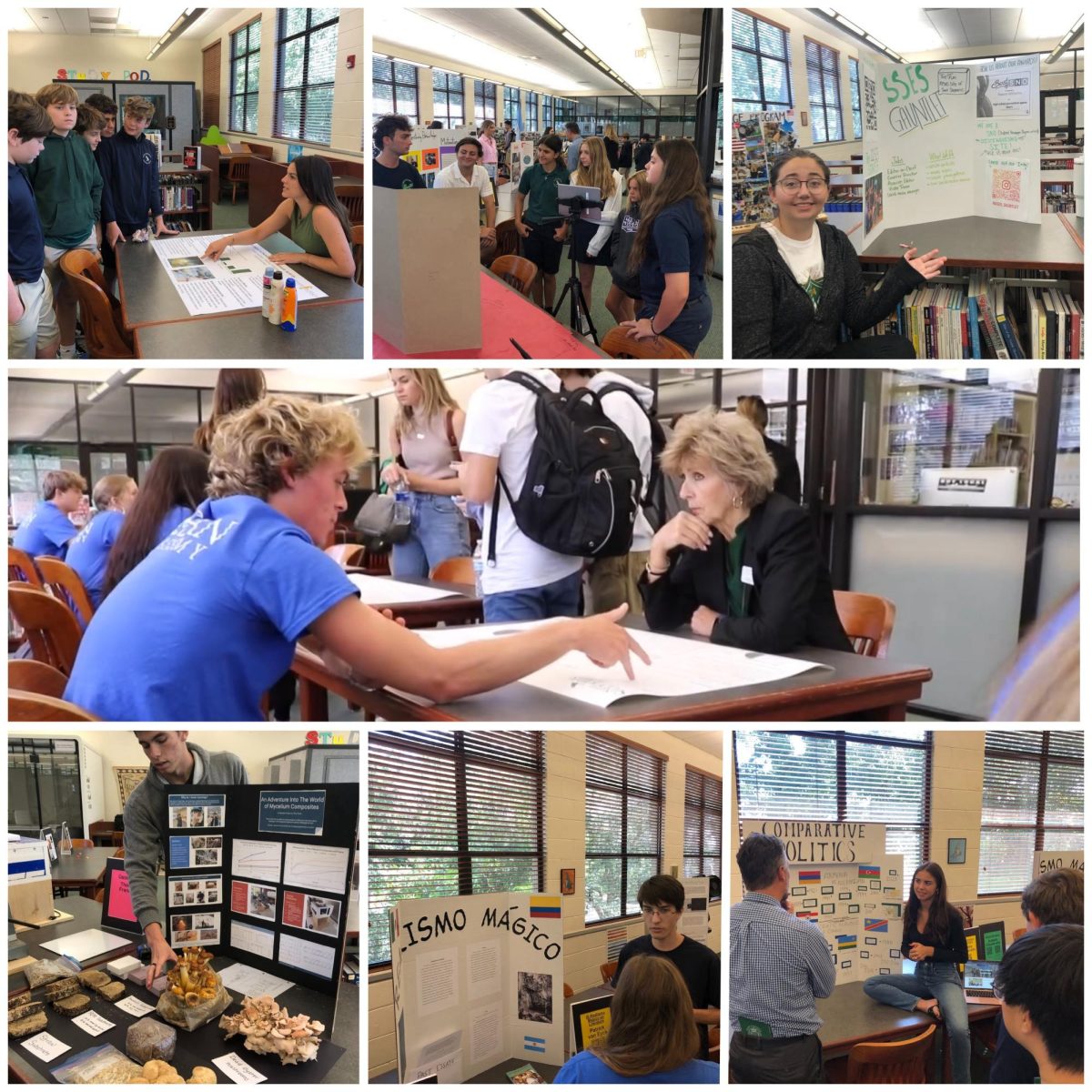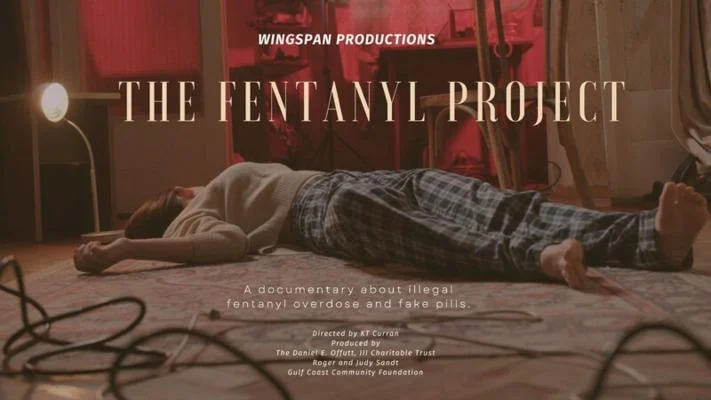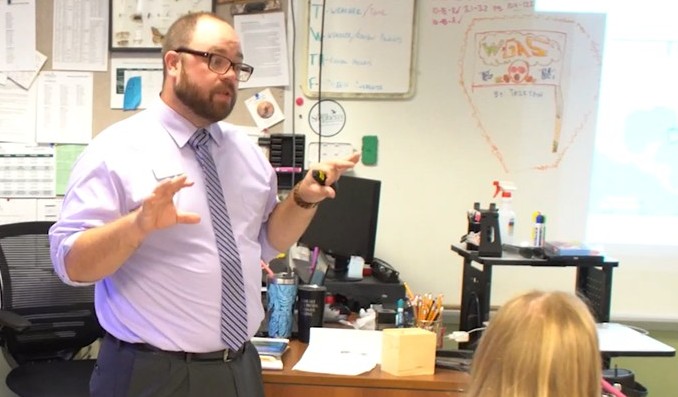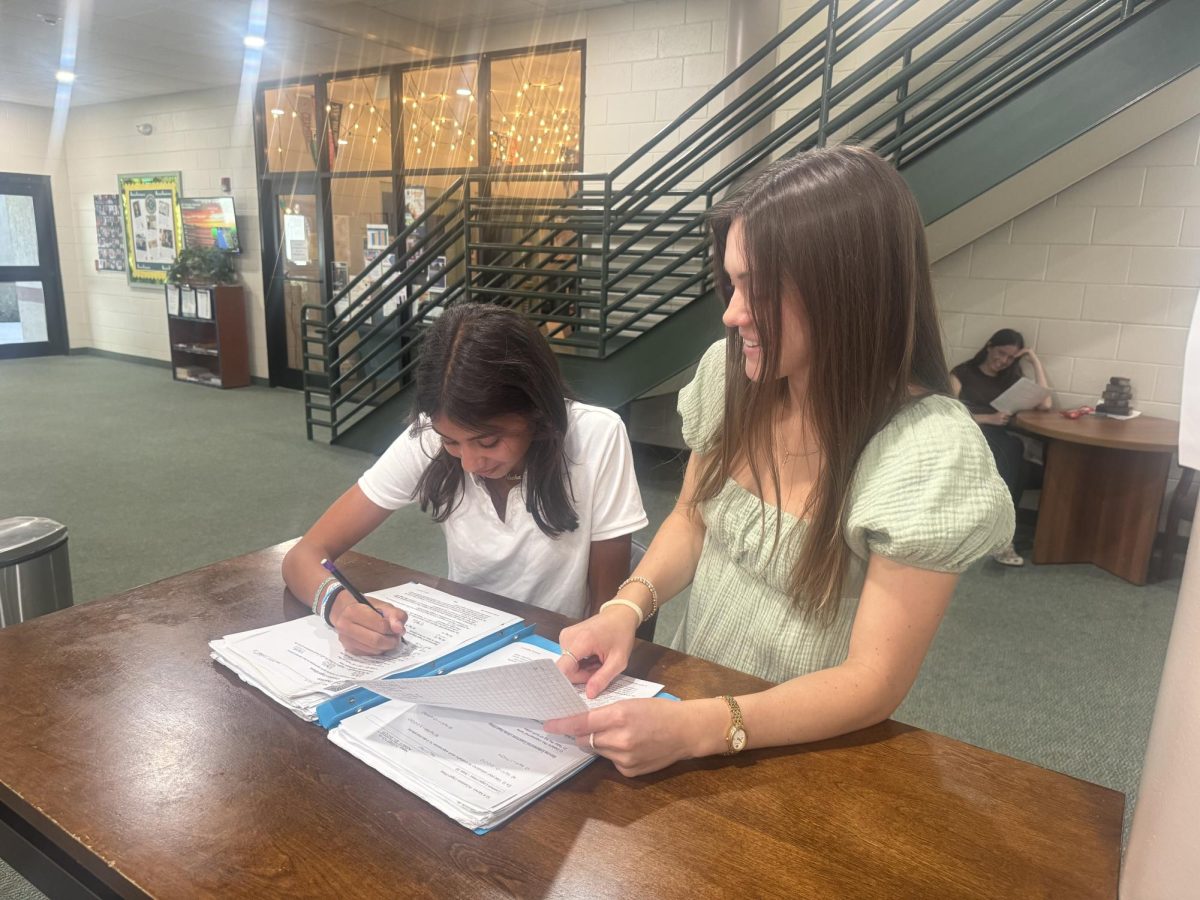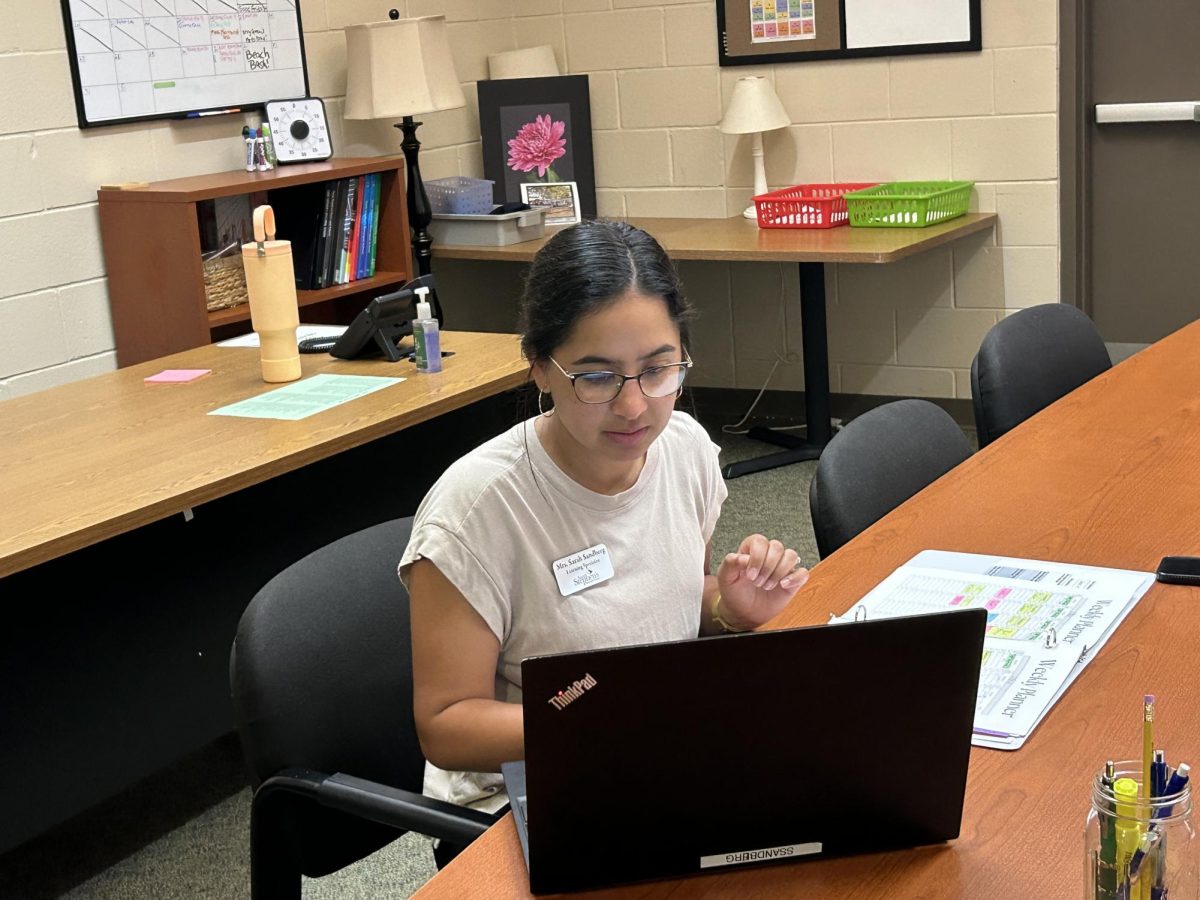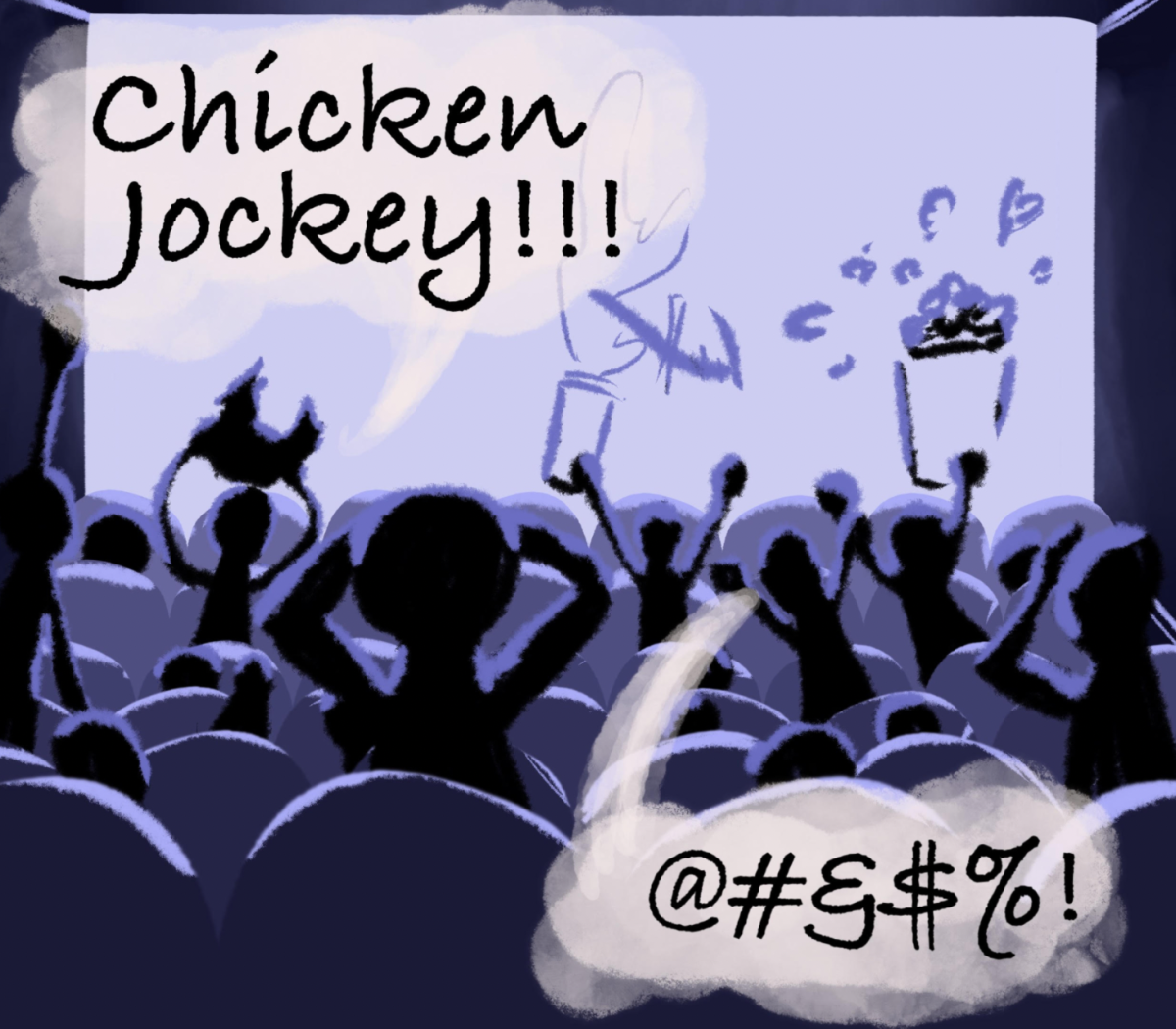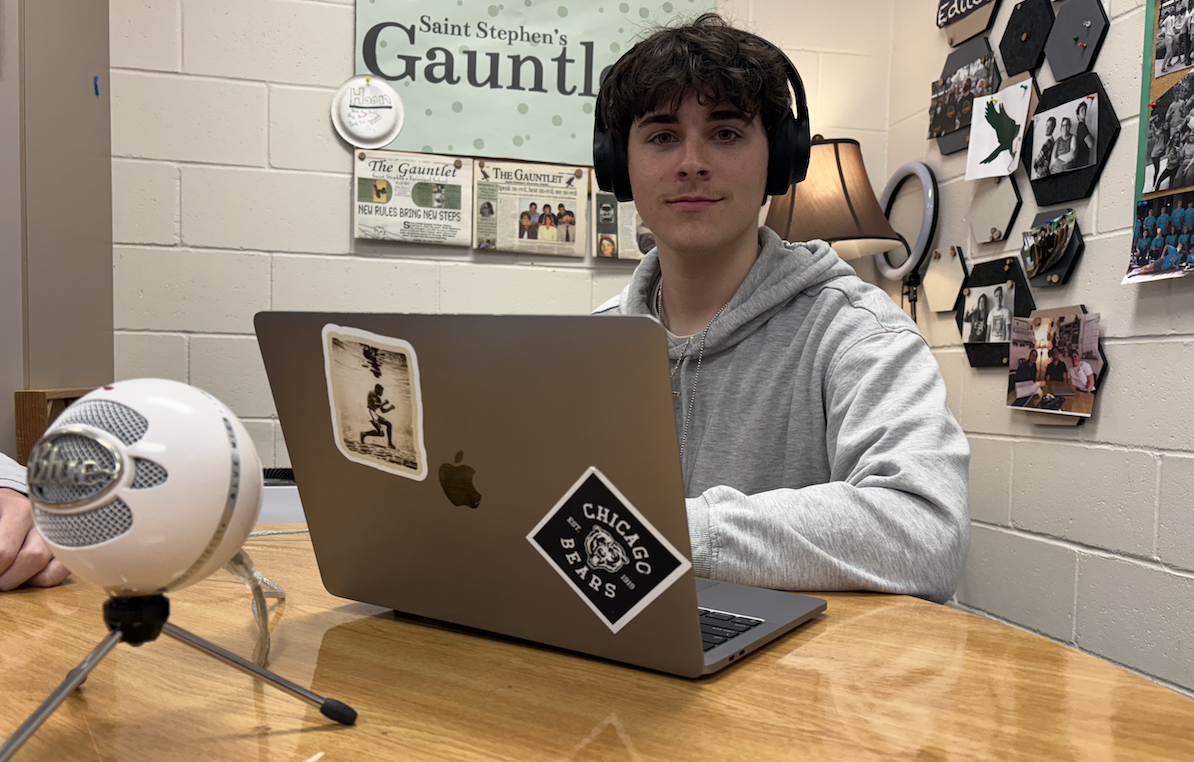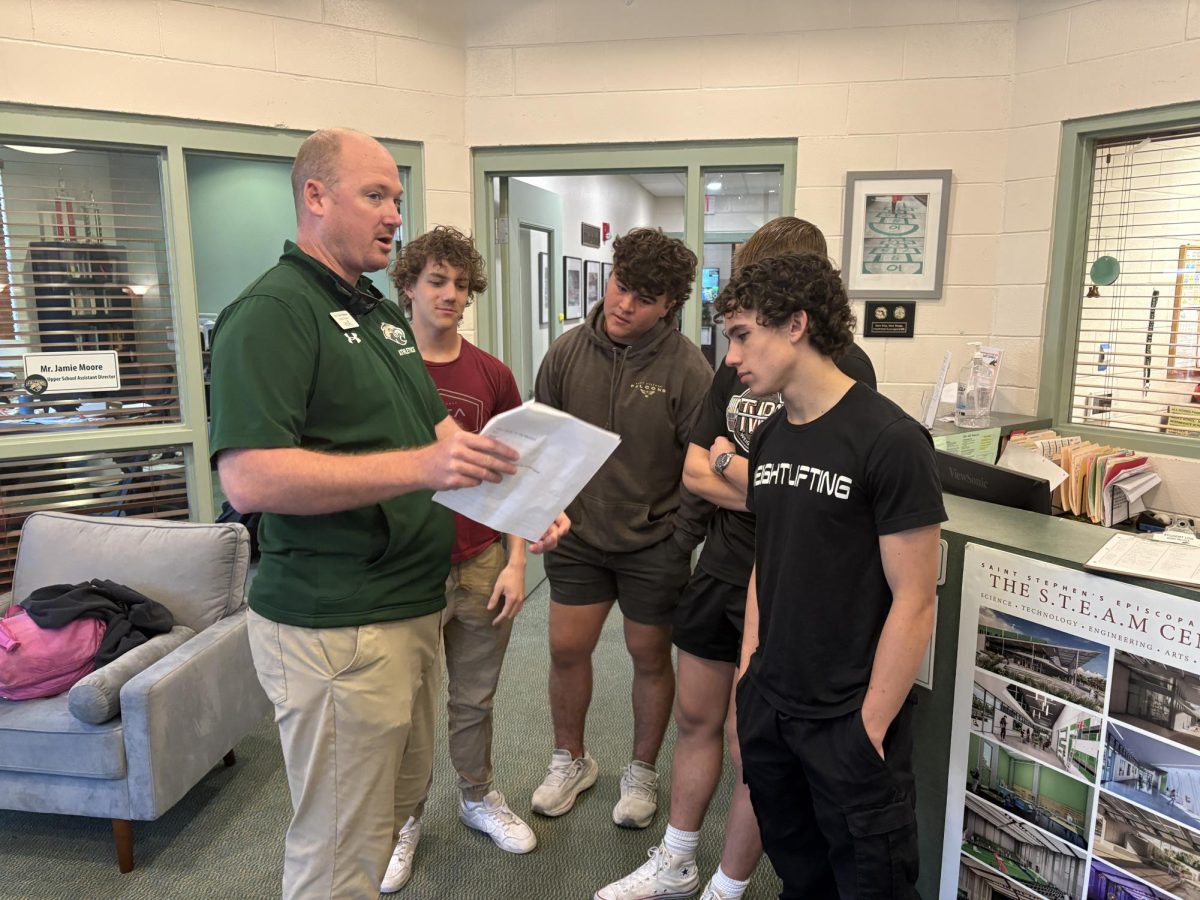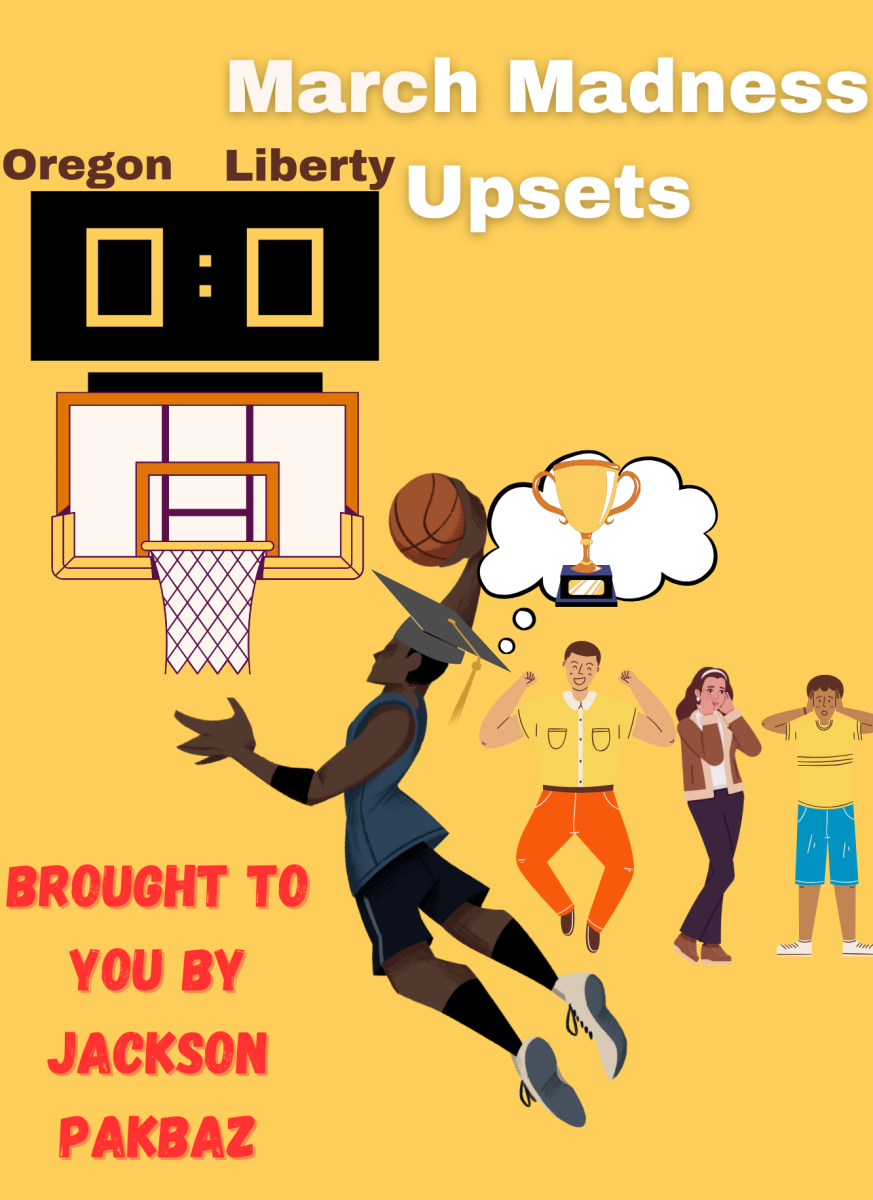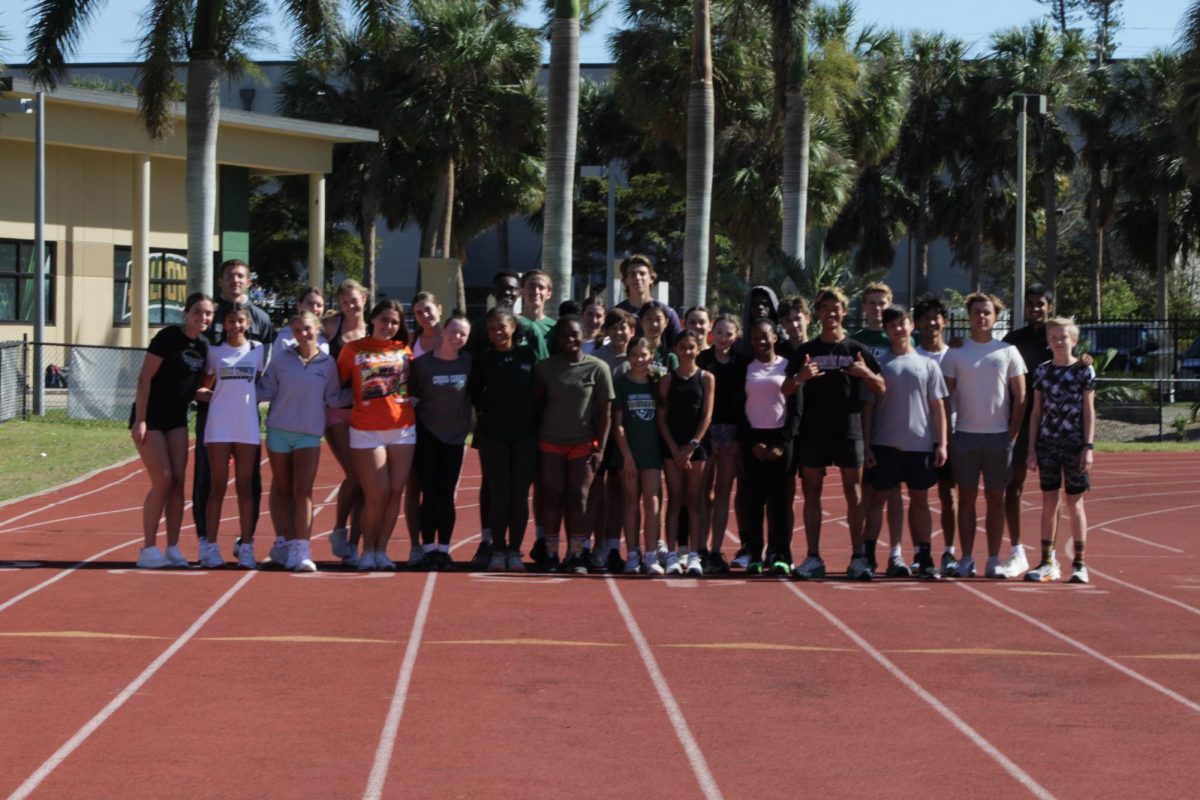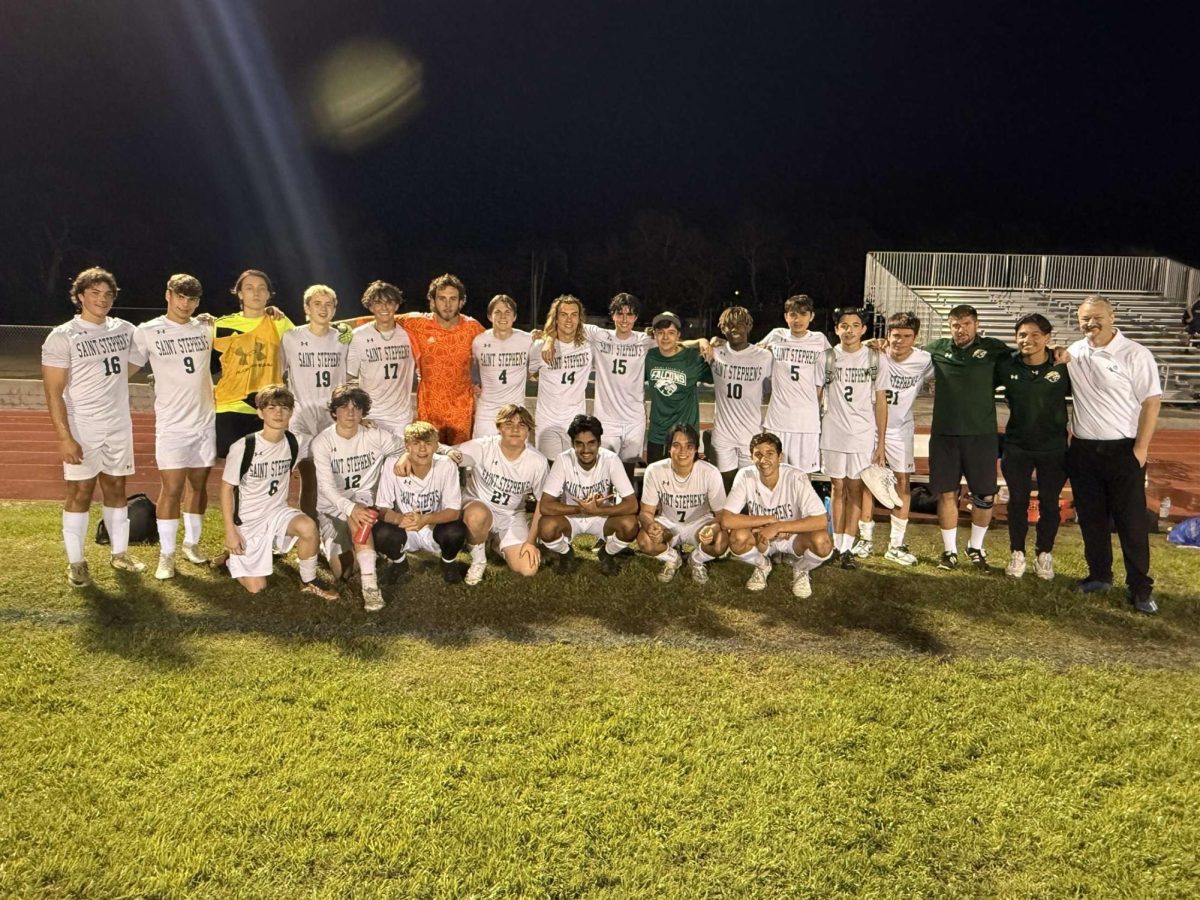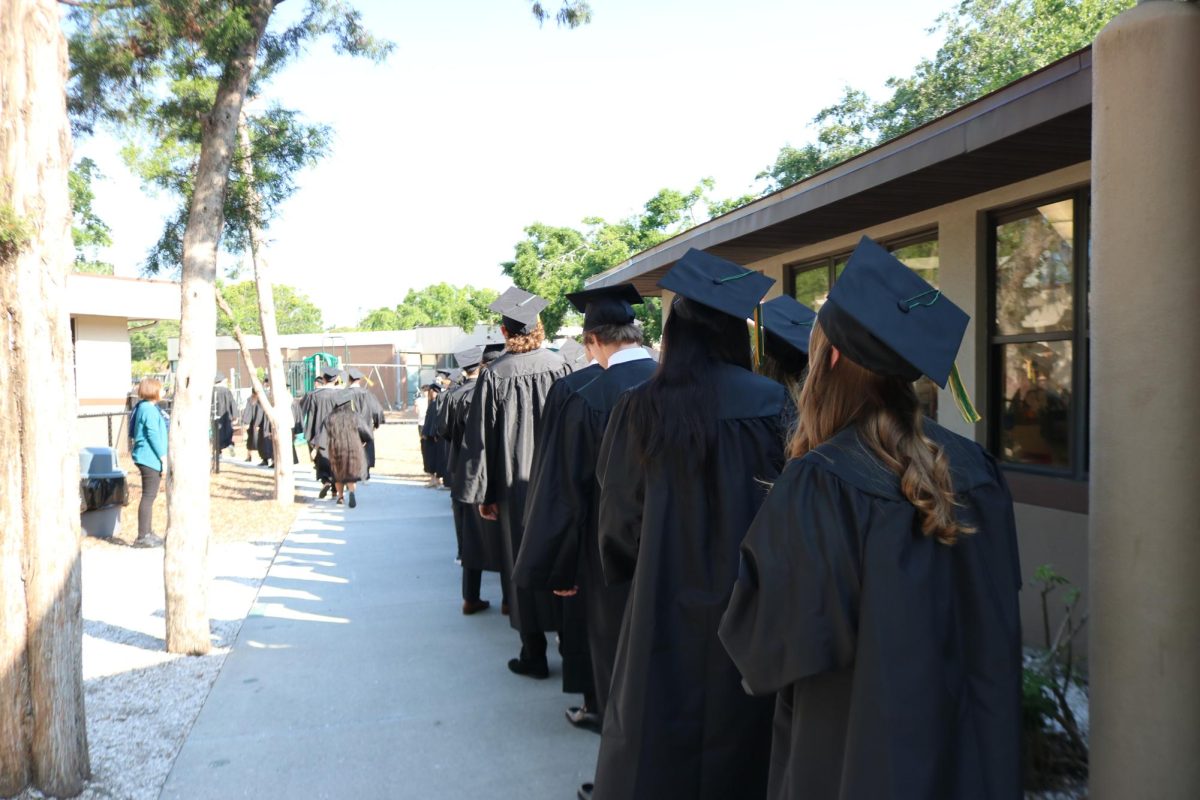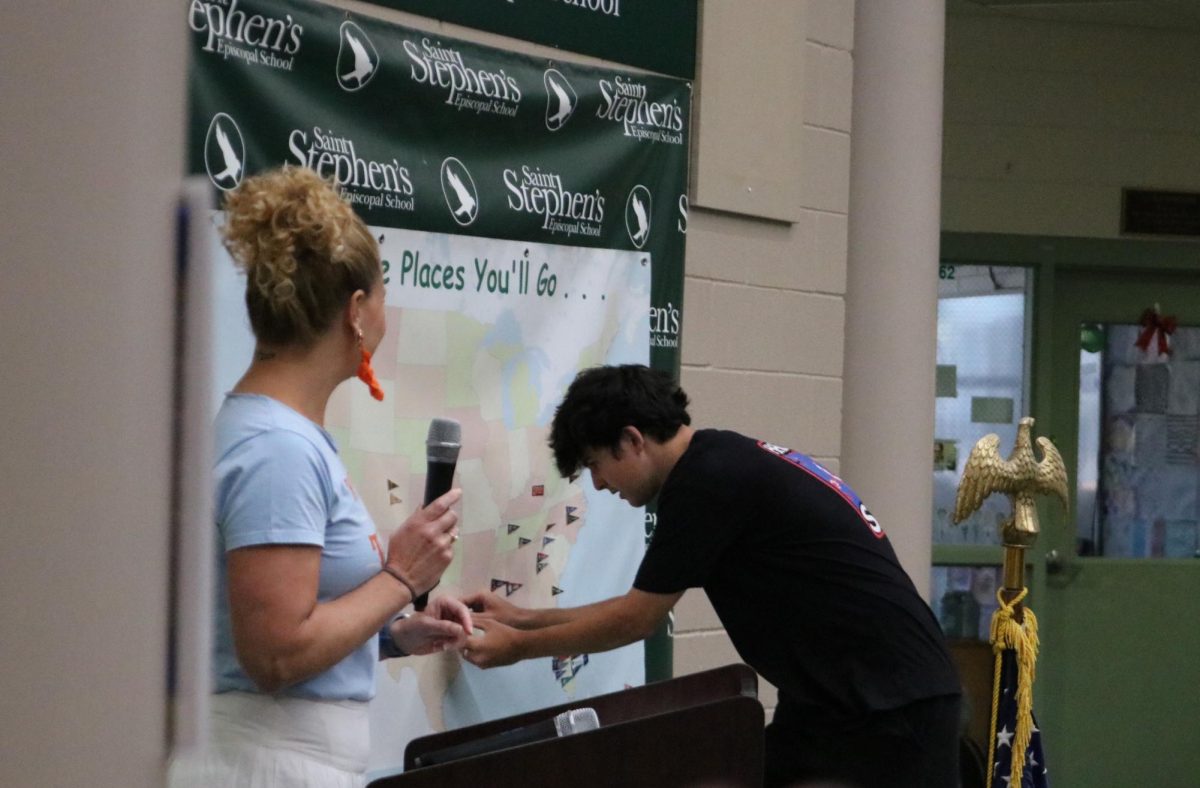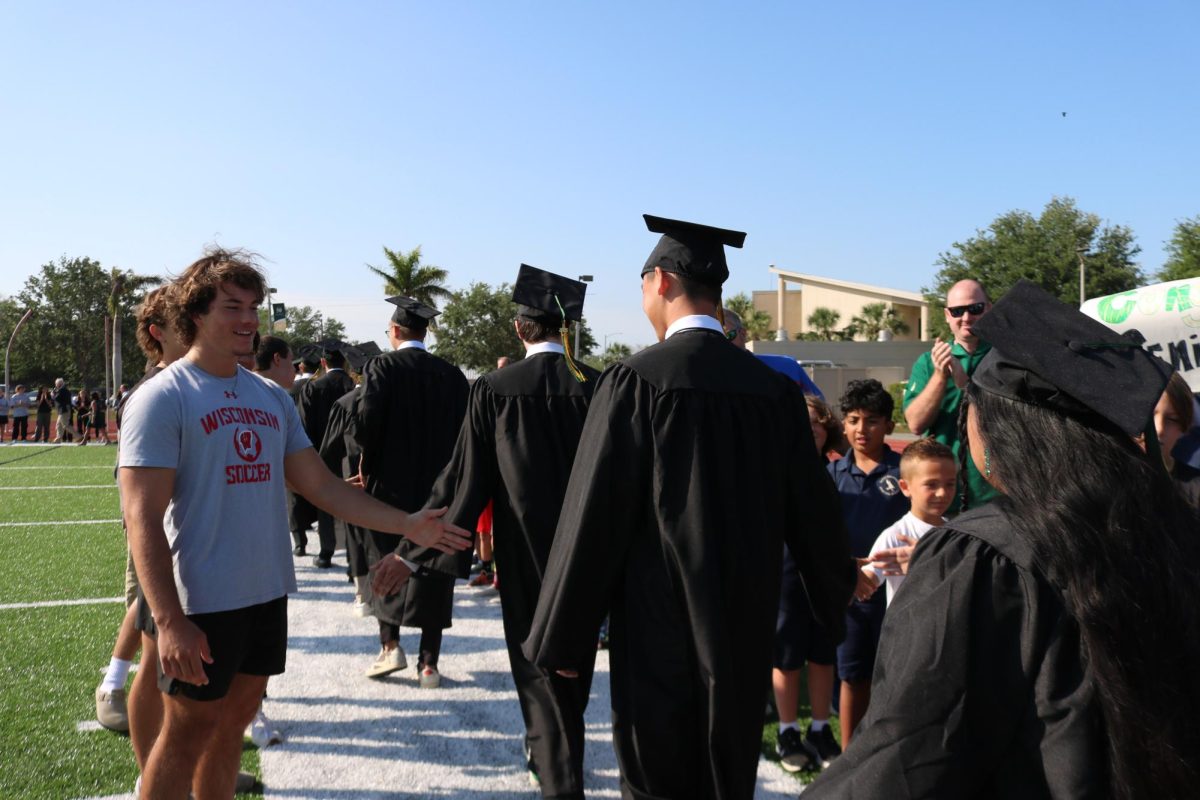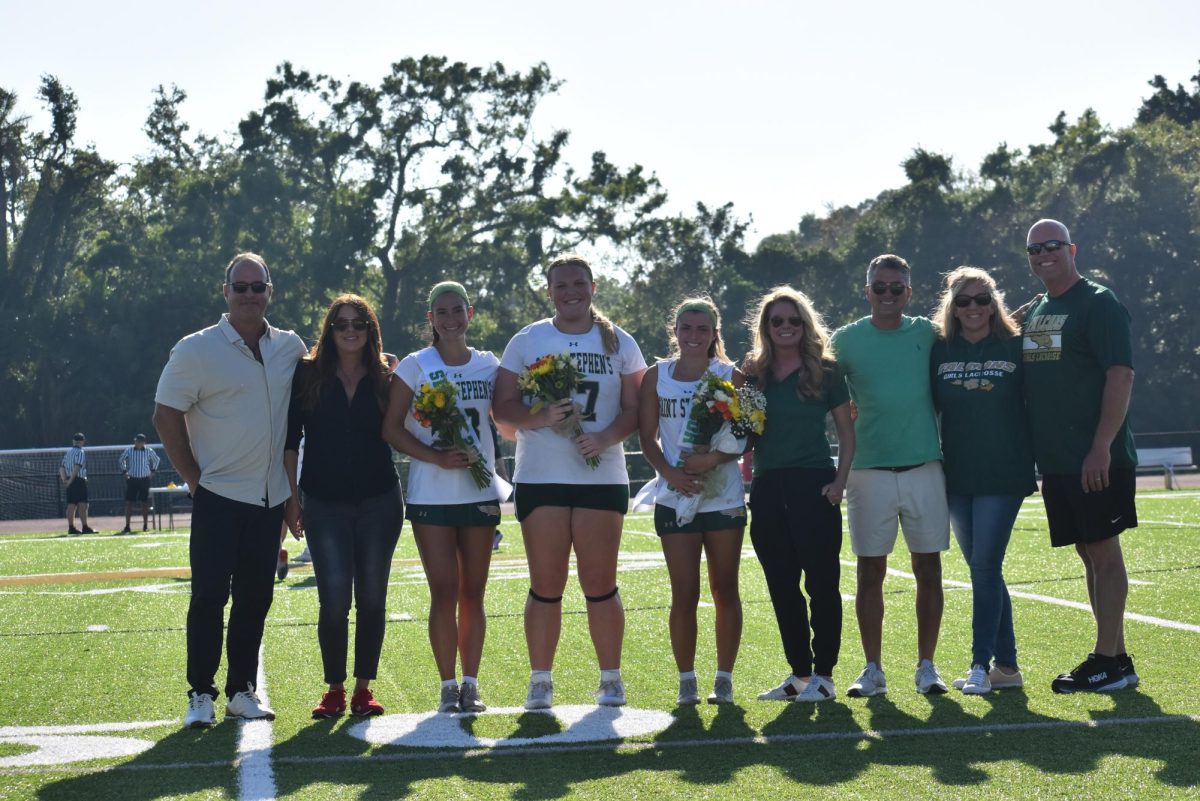Teachers in the Saint Stephen’s community have widely embraced the use of a new educational technique: flipping the classroom.
Flipping the classroom, which has been unofficially practiced by teachers for years, is a technique in which students are assigned videos, reading, or other assignments to do at home that teach them whatever concept they are learning in their class. Then they apply the concept by doing practice problems or other work, which would typically be considered “homework,” in class.
Academic Dean Ms. Elizabeth Teske, who introduced the technique to the Upper School teachers at a recent faculty meeting, said the technique originated when Sal Khan, a stockbroker living in New York, was asked to tutor his niece and nephew over Skype. One day, they needed help with their math homework, and since he wasn’t available, he sent them a video of himself teaching the lesson, a method of learning they found they preferred.
“He realized that the 10-15 minutes of instruction that they got from the video really taught them the core of the lesson, rather than spending 45 minutes going over questions and talking about it,” she said.
English teacher Mr. Scott Hertrick described flipping the classroom as a way of shifting the focus of class time from the teacher to the students.
“Instead of having the students do work learning direct instruction in class, they do that at home on their own, so that class time can be used for things that require more personal interaction. It’s about shifting the focus of class time from a teacher-centered classroom to a student-centered classroom, where the students’ ideas and interaction is key,” he said.
Upper School Chemistry teacher Ms. Jennifer Davis said she flips all of her classes. She said she appreciates that it provides students with an opportunity to learn a concept before she “talks at them about it.”
“I think students, especially at the AP and Honors levels, are thirsty for the knowledge of why some things are a certain way and others aren’t. They’re seeking patterns, but I’m not telling them what those patterns are, so it provokes the students’ natural curiosity. That way, when I do teach them something new, they’re excited to learn it, because it answers the questions they’ve had for a few days,” she said.
Mrs. Chi Klein, who teaches Intro to Calculus and several Biology classes in the Upper School, said she also flips all of her classes, but she sometimes prefers to teach the lesson herself.
“For some of the more difficult concepts I don’t like to use it because then students don’t always have the opportunity to ask questions, and it can detract from that student-teacher bond. But it is definitely a great tool to use for review and for introducing simpler concepts. I try to limit it to one or two videos a week…because I think there’s something to be gained from that student-teacher interaction that can be lost if the students are watching videos all the time,” she said.
Davis, who has been teaching for 13 years, said she had previous experience with flipping the classroom at her old school, and while she didn’t like the technique at first, she came to see its benefits.
“My old school completely flipped for everything and gave homework that was graded on accuracy before they gave a lecture. And initially I thought it was pure evil, to be honest, but it really made the kids thirsty for information, because they didn’t want to get the questions wrong,” she said.
Hertrick said he became familiar with the technique through the professional development initiative at Saint Stephen’s and found that it paralleled his approach to teaching.
“The Middle School teachers read a book on it over the summer as part of professional development. I think it’s at the heart of my classroom philosophy, which is that what students have to say to each other is far more important than what I have to say to them. I think making time and space for them to talk with one another is key,” he said.
Klein said she has been flipping the classroom for years without realizing the technique had an official name.
“I had been doing it without recognizing it as ‘flipping’ for a while; I used to post things on NetClassroom or on my Web site for students to watch at home. Ms. Teske also mentioned it at a faculty meeting, and I heard about it when I attended an AP conference,” she said.
Teske said she appreciated that flipping the classroom followed the educational philosophy of teaching students in smaller amounts of time in order to keep their interest. She added that it also gave teachers more opportunities to give students individual attention.
“By putting the lesson on a video for the kids to watch at home, the teacher has more time in class to individually answer the kids’ questions and support them while they master the concepts. By learning the lesson on their own, students have the opportunity to ask questions as they come across them when they practice and apply the concept at school,” she said.
Davis said she thought the most important aspect of flipping the classroom was that it tells her what she needs to spend more time teaching and what concepts the students already understand.
“I have the students do the problem sets before I teach the lesson. Then I grade their homework based on completion, and when I hand it back to them, I say, ‘Here are the answers. Which ones do you want me to go over?’ That way we don’t waste time on the silly stuff, and I know what areas I need to spend time lecturing on,” she said.
Despite the general enthusiasm the teachers displayed about flipping the classroom, they were met with mixed reactions by students.
Junior Tiag Bhamber said two of his classes flipped this year, and he found the technique to be a waste of time.
“The problem with flipping the classroom is that when a student goes home, if they don’t immediately understand the material, they will completely give up and not try to understand it more. Then we have to spend an equal amount of class time re-learning it, so overall it’s a really inefficient process,” he said.
Hertrick said he had his eighth grade class do a project that exemplified the flipping the classroom technique, which he summarized with the phrase, “the sage on the stage versus the guide on the side.”
“I gave them some feedback and guidelines to work with, but I didn’t give them a whole lot of direct instruction about what they had to do, so it was more about student discovery. In the flipped classroom, the teacher is a guide who is helping and supporting students rather than being the authority figure making a presentation in front of the class,” he said.
Klein said she tries to vary the types of assignments she sends her students home with, because they have had mixed reactions to the use of the flipping the classroom technique.
“It definitely depends on the student; some love it, and others aren’t as fond of it. I try to vary my classes so that they’re not watching five videos a week. I also assign news articles and NPR podcasts for the students to do at home,” she said.
Davis said labs were the most common way for her to flip her classes.
“I just had them do a lab with almost a hundred reactions. The book does a really good job of predicting the possible products, so we’ll start there and try to find the patterns. Then we’ll start teasing out the solubility rules. So through this lab, they’ll discover balancing chemical equations, solubility rules and formation of gases,” she said.
Teske said the great thing was that the resources that have been created along with the flipping the classroom phenomenon can be utilized by students whose teachers don’t flip.
“You don’t have to have a teacher who is flipping the classroom in order to take advantage of the resources that are available. If you’re learning a new concept in a class, you can go on the Khan Academy app, for example, and watch the video,” she said.
Klein said even though the students were doing more independent learning with the use of the flipping technique, creating lesson plans was still just as difficult.
“If you are constantly challenging yourself as an educator, it’s always hard to create lesson plans and ways to make class interesting. Just because I’m sending kids home with videos to watch doesn’t mean I’m not doing anything else. I’m constantly changing things up and trying to figure out different ways of doing things or build on things that have worked in the past,” she said.
Junior Kirsten Samuels, whose teacher just started flipping the classroom, said she liked the technique.
“The teacher isn’t there to explain if you have a question, but I’m happy with how my teacher will go over the material in class. Also, we get to do our homework in class, so that’s a plus,” she said.
Davis said even though her students do not always love the technique, she thought flipping the classroom provided students with skills that were crucial to their success after high school.
“I think it’s important…to become more comfortable with not immediately knowing the answer. To me, that is the number-one skill you need in order to succeed in college. You have to learn to be comfortable and confident enough in yourself to figure out the answers. It is not a favorite activity among the students, because not knowing something is always frustrating. But I think the struggle is a prerequisite to attaining the skill,” she said.


